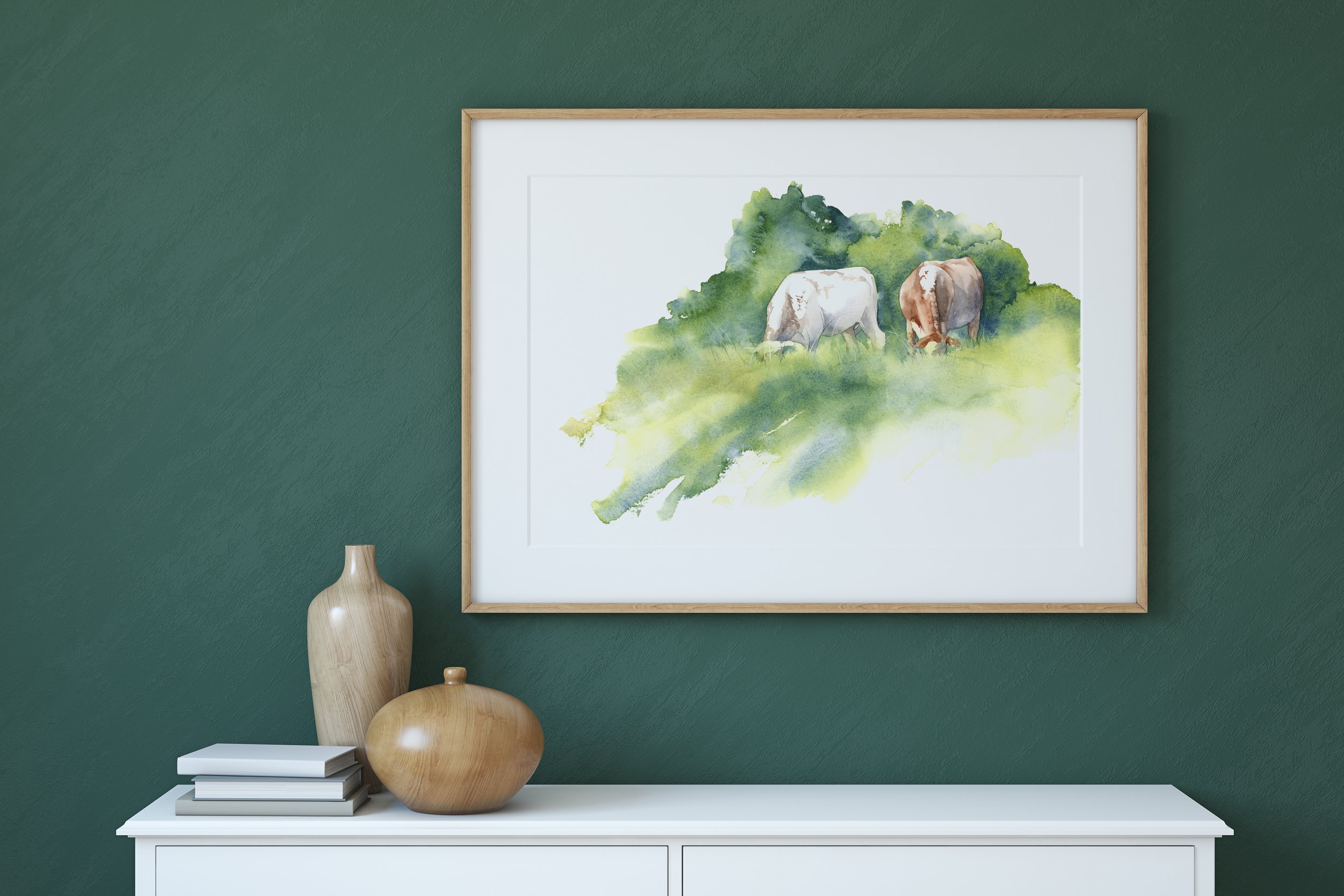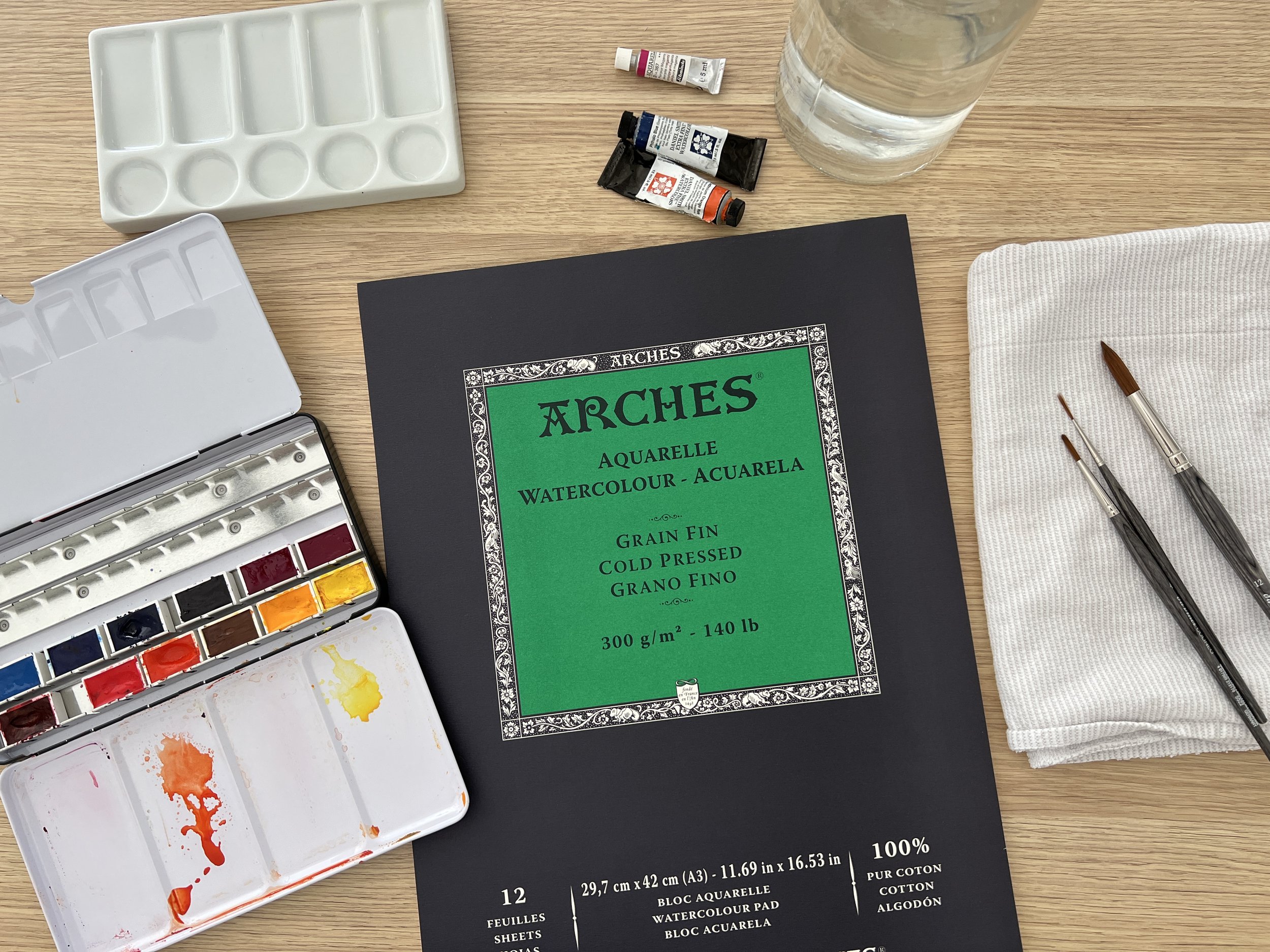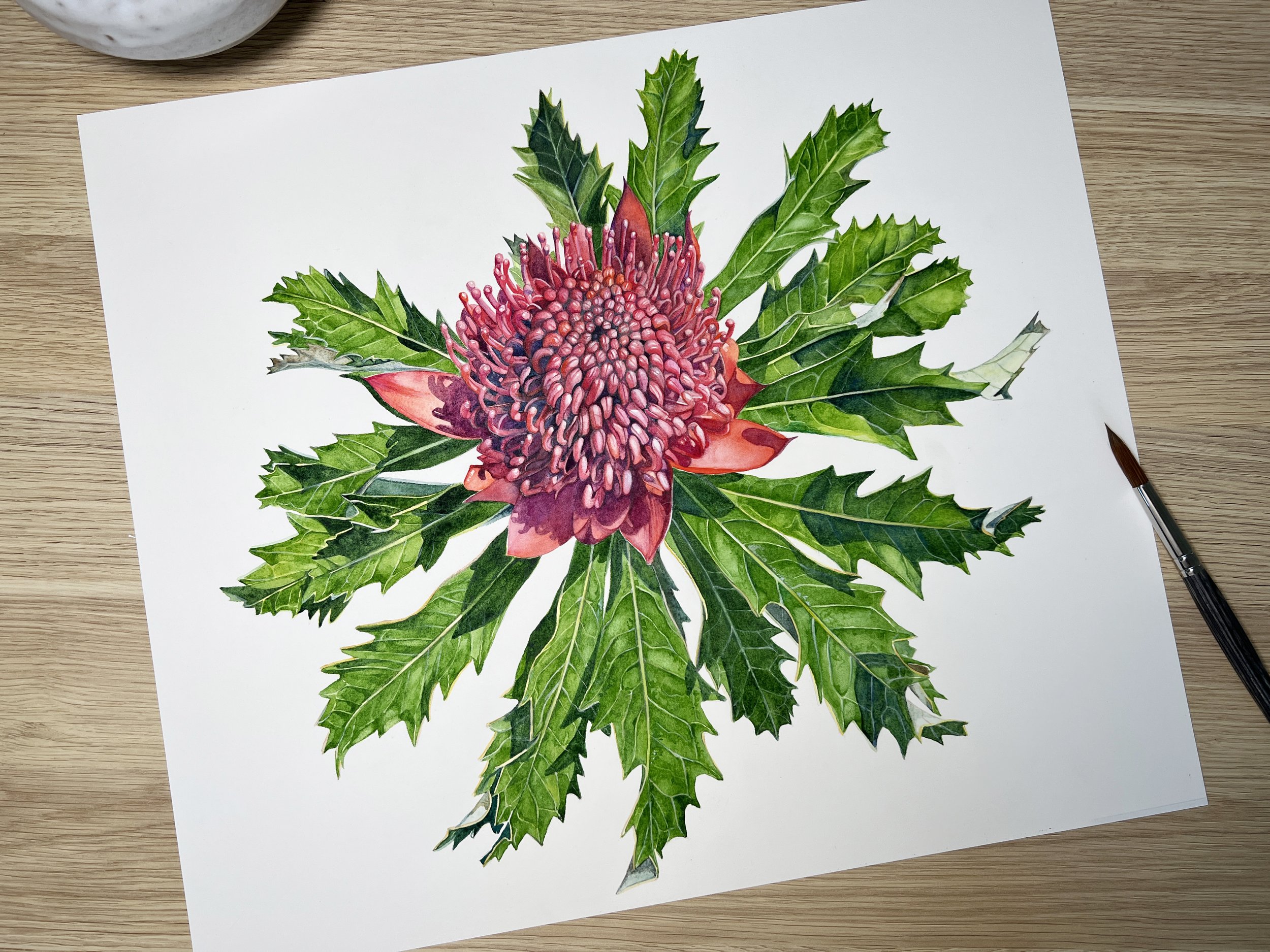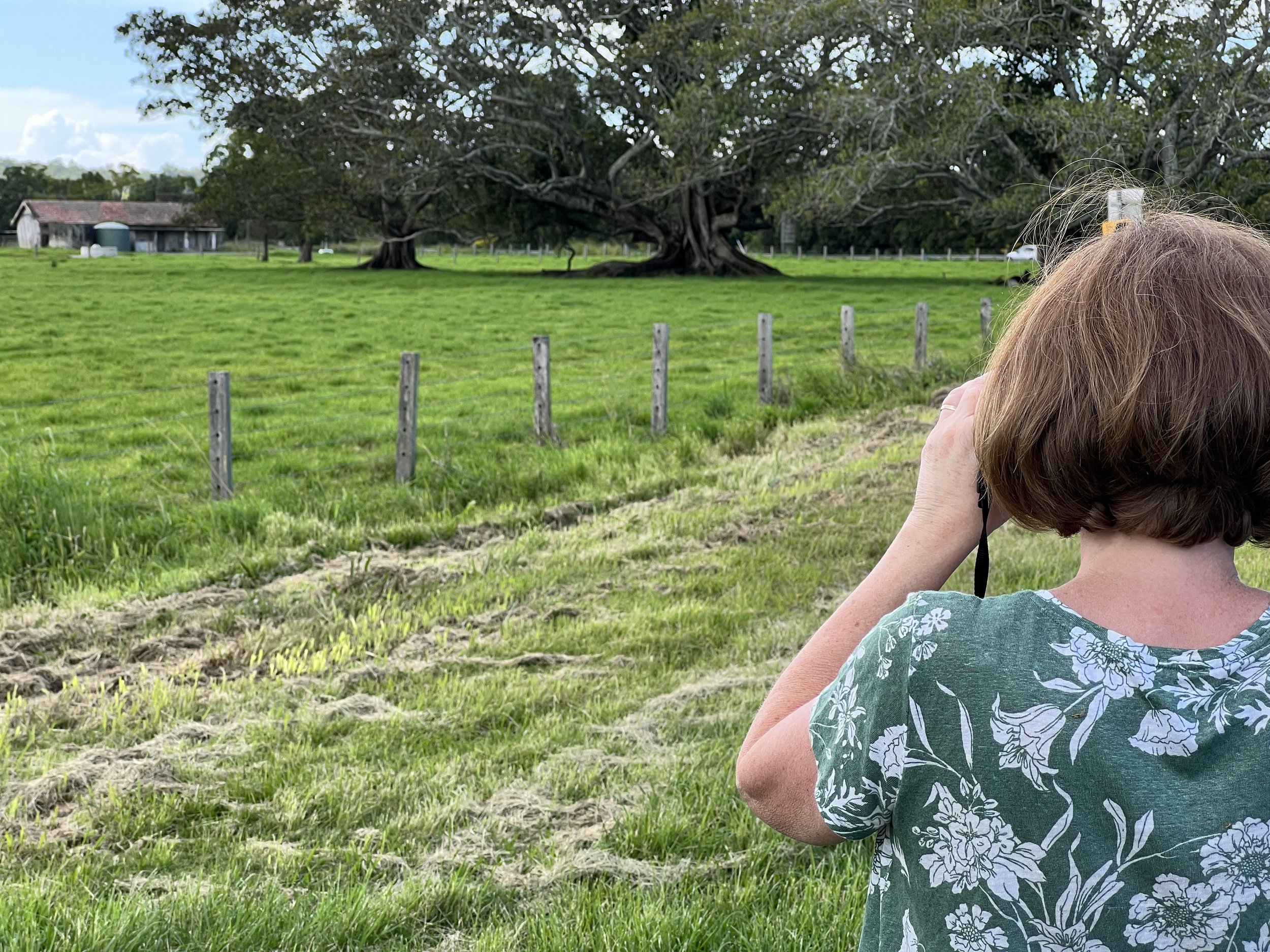FAQ
Frequently Asked Questions
Welcome to the FAQ page where we answer many of your most frequently asked questions about Watercolour painting, art supplies & materials, and techniques.
Disclosure: This post contains affiliate links, which means I may earn a commission if you make a purchase through my link at no extra cost to you.
Watercolour Art
-
Watercolour art is a medium of painting using water-based pigments, usually on paper. The transparency and luminosity of the paint make it popular for creating delicate, airy and fluid artworks.
-
Watercolour wall art refers to watercolour paintings that are hung on walls. They can include a wide variety of subject matter, including animals, flowers, birds, landscapes, and more.
“Dorrigo Cows” Landscape vignette
Art Materials
-
To get started with watercolour painting, you'll need watercolour paints, 100% cotton watercolour paper, brushes, and water. You will also need a palette, old towel, and a water container. If you decide to stretch your paper you will also need a rigid board such as gator board some gummed tape, stapler and staples.
-
There are many great sets of watercolour paints for beginners available. Some popular brands include Winsor & Newton, Daniel Smith, Schmincke, and Roman Szmal. Look for sets with a range of colours, and consider buying individual tubes or pans of paint as you progress. Basically a warm and cool red, a warm and cool yellow and a warm and cool blue will allow you to mix most colours you will need. You can purchase art materials using my affiliate links with Jackson’s Art.
-
The best paper for watercolour painting is 100% cotton rag paper. Louise De Masi recommends brands such as Arches, Saunders Waterford, and Fabriano Artistico.
Watercolour paper comes in different weights and textures. Look for paper specifically designed for watercolour painting, and choose a weight that suits your painting style. A rough texture will create a more textured look (good for landscapes), while a smoother texture is better for fine details and printing. The texture of cold press paper, sits in between hot press and rough paper and is the most popular texture among artists.
Watercolour board is as it sounds, a thick board, that doesn’t require stretching and can be great for large or small paintings if you don’t want to stretch your paper.
-
Different brushes have different shapes and sizes, which are suited to different techniques. Generally, round brushes are good for washes and details, while flat brushes are good for broad strokes and edges. Experiment with different brushes to see which ones work best for you.
-
It’s useful to know the pigment codes of the paint you use because colour names vary between different brands. The same pigment can have different names. For example, the pigment code PB15 is called Manganese Blue Hue in the Daniel Smith brand but in the Winsor & Newton brand it’s called Winsor Blue.
If you are following a painting tutorial, knowing the pigment codes can help you substitute colours between different brands.
-
Whilst gouache and watercolour paints may look similar at first glance, they have distinctive qualities that set them apart. Differences in opacity, transparency, texture, and permanence help set them apart.
Watercolour is a transparent medium that tends to be more fluid, while gouache is an opaque medium with a much thicker consistency. Watercolour paints are known for their soft, delicate washes of colour while gouache offers bright, heavy pigment coverage when applied. Because gouache has larger pigment particles than watercolour, it is more opaque. See more information at this post on the Difference Between Watercolour and Gouache.
Art Supplies used by Louise
Techniques & Guides
-
What are the benefits of painting in watercolour?
One of the main benefits of using watercolour is that, once you have an understanding of the basic techniques, it is relatively easy to learn. This makes it ideal for beginners and experienced artists alike who are looking to explore the medium further.
-
It's a good idea to stretch your watercolour paper before painting on it, especially if you're using a lightweight paper. This will prevent the paper from buckling or warping as it absorbs water.
-
There are many ways to create textures and effects with watercolours, including wet-on-wet, dry-brushing, lifting, splattering, and masking. Granulating medium that can be mixed with paint is also used for creating texture. Experiment with different techniques to see which ones work best for the effect you want to achieve.
-
Watercolour techniques include wet-on-wet, wet-on-dry, dry brush, glazing, charging and more. Each technique has its own unique effects and challenges, and mastering them can help artists create a range of styles and moods in their artworks.
Wet on Wet
Original Paintings and Prints
-
You can purchase original watercolour paintings and archival prints from Louise De Masi's online shop. Her collection includes a range of subjects and styles, from animals to birds to botanical subjects.
-
When framing and displaying your watercolour paintings, it's important to choose a good quality frame that complements the painting and protects it from damage. Use only acid-free, archival matting to prevent deterioration over time.
This applies to framing archival prints as well so they will last a long time.
-
To care for and preserve your watercolour paintings, avoid exposing them to direct sunlight or moisture, and store them in a dry, cool place. Use acid-free materials when framing and matting your paintings.
If you need to clean your painting, use a soft, dry brush to gently remove dust and debris.
-
Yes, we ship internationally. Shipping rates may vary depending on your location.
Warratah Painting
Inspiration
-
Louise’s watercolour paintings are inspired by the beauty of nature, the play of light and shadow, and the vibrant colours of the world around us. She lives on a large property that backs on to a state forest and she loves the wildlife and birds that are nearby.
-
The time it takes to complete a watercolour painting can vary depending on the size, complexity, and style of the painting. It can take anywhere from a few hours for a simple painting to many days for a more complex painting.
-
Louise is not available for commission work. All of her time is taken up developing new online classes and tutorials which leaves her little time for anything else. She does, however, ask Patrons about the types of paintings they would like to be considered for a subject of a tutorial.
Louise Gathering Reference Photos




